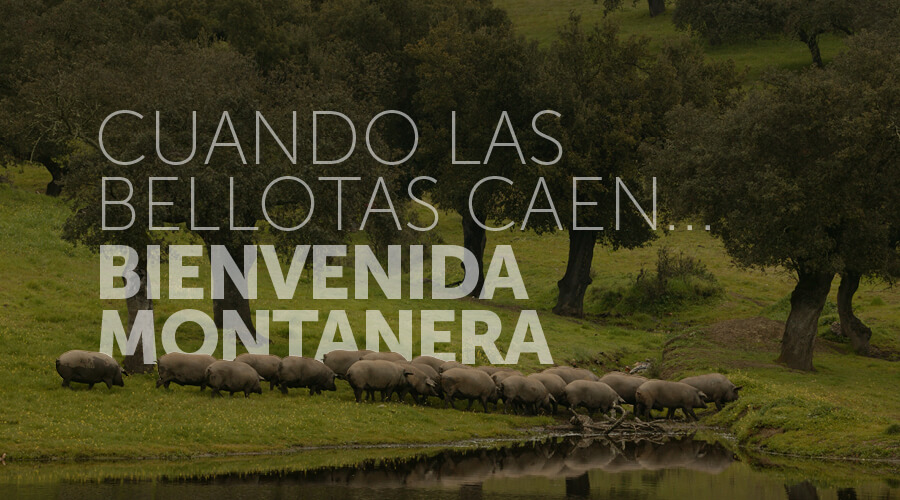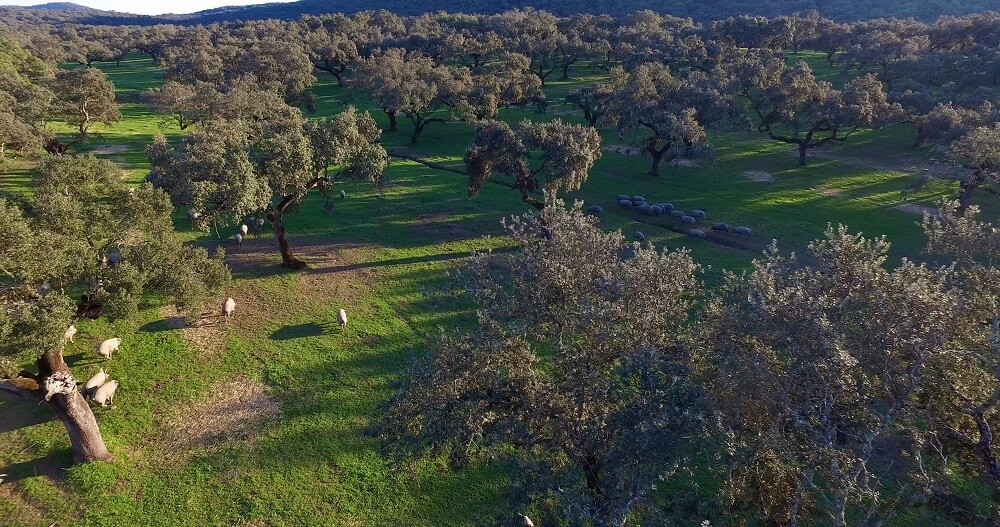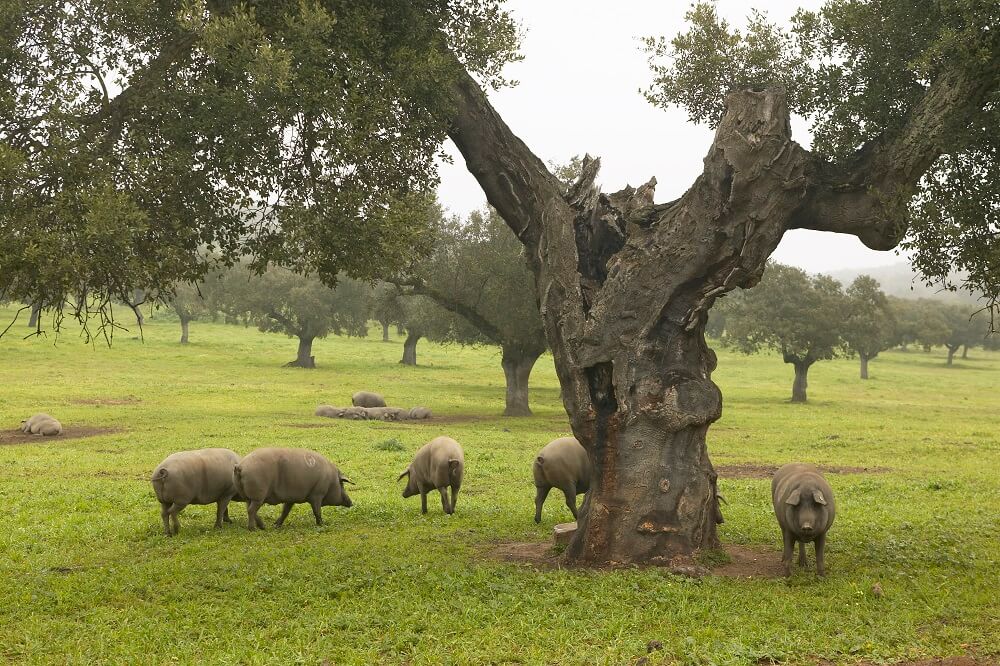

The Iberian pig has traditionally been linked to an image of the dehesa woodland pastures and acorns, a 100% natural food that has made this acorn-fed pig produce the best pork in the world. Also, the pigs' consumption of acorns is a sustainable way to use the forests. The Mediterranean dehesa occupies an area that encompasses Extremadura, the Portuguese Alentejo, Western Andalusia and isolated areas in Castilla and Leon, Castilla-La Mancha and Madrid. At this time of year in the dehesa, the acorns fall from the tree and the peaceful landscape is embellished with quaint dark pigs with drooping ears that travel up to 10 kilometres a day looking for their favourite food. The montanera has arrived.
The term "montanera" refers to the period of time during which pigs spend their time living freely in the dehesa to feed mainly on acorns and grass (as well as bulbs and roots). The famous acorn-fed Iberian pig does not eat acorns from birth. In order to grow and develop their bones, pigs need other types of food such as cereals. Nevertheless, in the time when the dehesa offers the fruits from its trees, a period that lasts from the end of October until the end of February, the authentic acorn-fed Iberian pig becomes the king of the dehesa and roams around at ease, exercising and feeding.

The exploitation of the Iberian pig is closely linked to the Mediterranean dehesa, which determines its productive possibilities. The volume of acorns and, therefore, the feeding capacity, varies from one year to the next. The harvests are different depending on the weather, so the possibilities for feeding pigs and the livestock density also vary. According to the most common estimates, the acorns produced in a good year may be enough to fatten 350,000 pigs, while in a bad year they would barely be enough to feed 150,000 pigs. As a result, the production of acorn-fed hams in Spain is limited and is dependent upon the acorn harvest.
During the montanera months (3-4 months) in which the pig is on this exclusive acorn-based diet, the fatty acids from the acorns are transferred to the pig's muscles, the flesh is enriched with the characteristics of the acorn and its muscles seeped in fat will develop the aromas and flavours that make Iberian acorn-fed ham spectacular. It is considered an acorn-fed pig when it has gained at least 45 kg in weight during the montanera, although, in the best cases, it can gain up to 60 kg. A pig can eat up to 9 kg of acorns a day.
The acorn is the characteristic fruit of the species of the genus Quercus, where holm oaks (Q. ilex), cork oaks (Q. suber) and oak trees (Q. robur) are noteable as the most prevalent trees in the Mediterranean dehesa. This fruit has its ripening season during the winter months and can vary according to the Quercus variety, the location of the trees and their genetic characteristics, which means that they can be different in size, colour and shape and can be more or less sweet, something that does not go unnoticed in the pig world.
The acorn is known for its high content of oleic acid and antioxidants which are transferred to the pig, so that the meat has a higher proportion of monounsaturated acids (especially oleic), to exceed 50% of all fatty acids. The high oleic acid content in Joselito Hams help reduce cholesterol and triglycerides. The grasses under the acorns, are the second most ingested food during the Montanera season, and are a source of protein and Vitamin E that the pigs also acquire.
The Iberian pig shares its natural habitat in the dehesa with another of our most emblematic animals, the bull, but during that time of year the herds of pigs dominate the landscape. The pigs seek out the succulent acorns, sleep under the holm oaks and splash about in the puddles left by the first rains. An opportunity for country lovers to enjoy the colours of autumn and the picturesque Montanera landscape, this year with a good supply of acorns on the holm oaks, but, sadly, affected by the scarcity of water.


No compartimos tus datos. No spam.